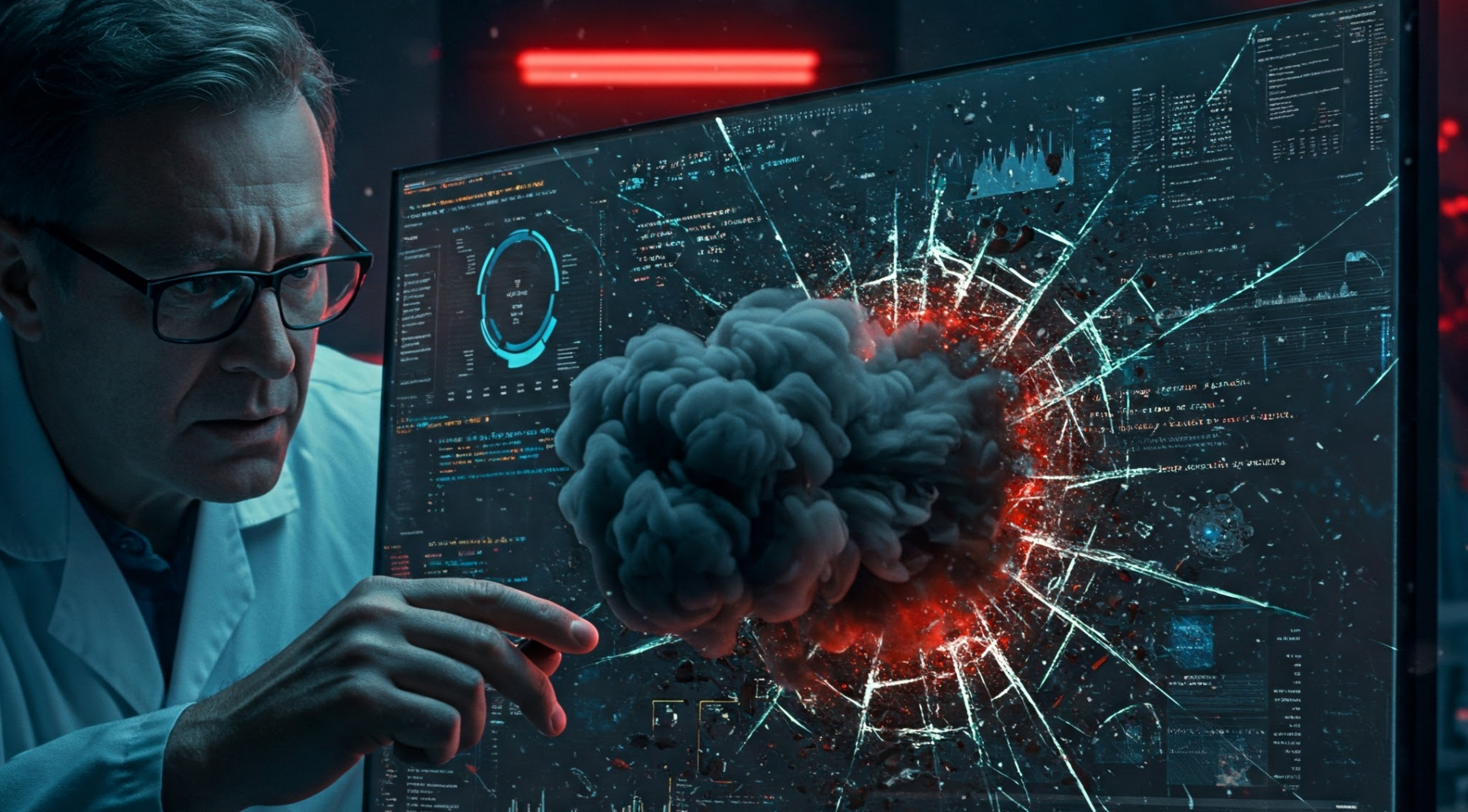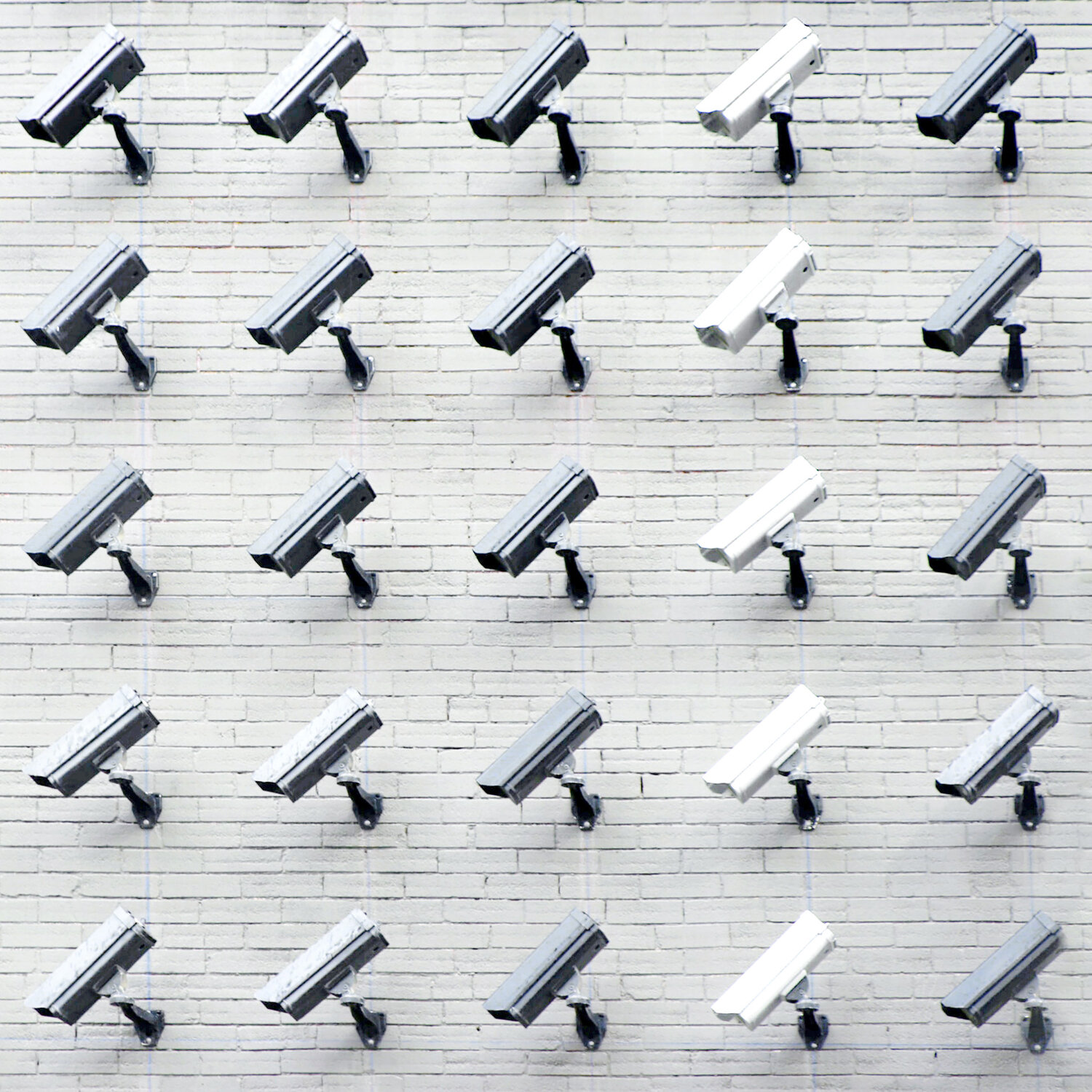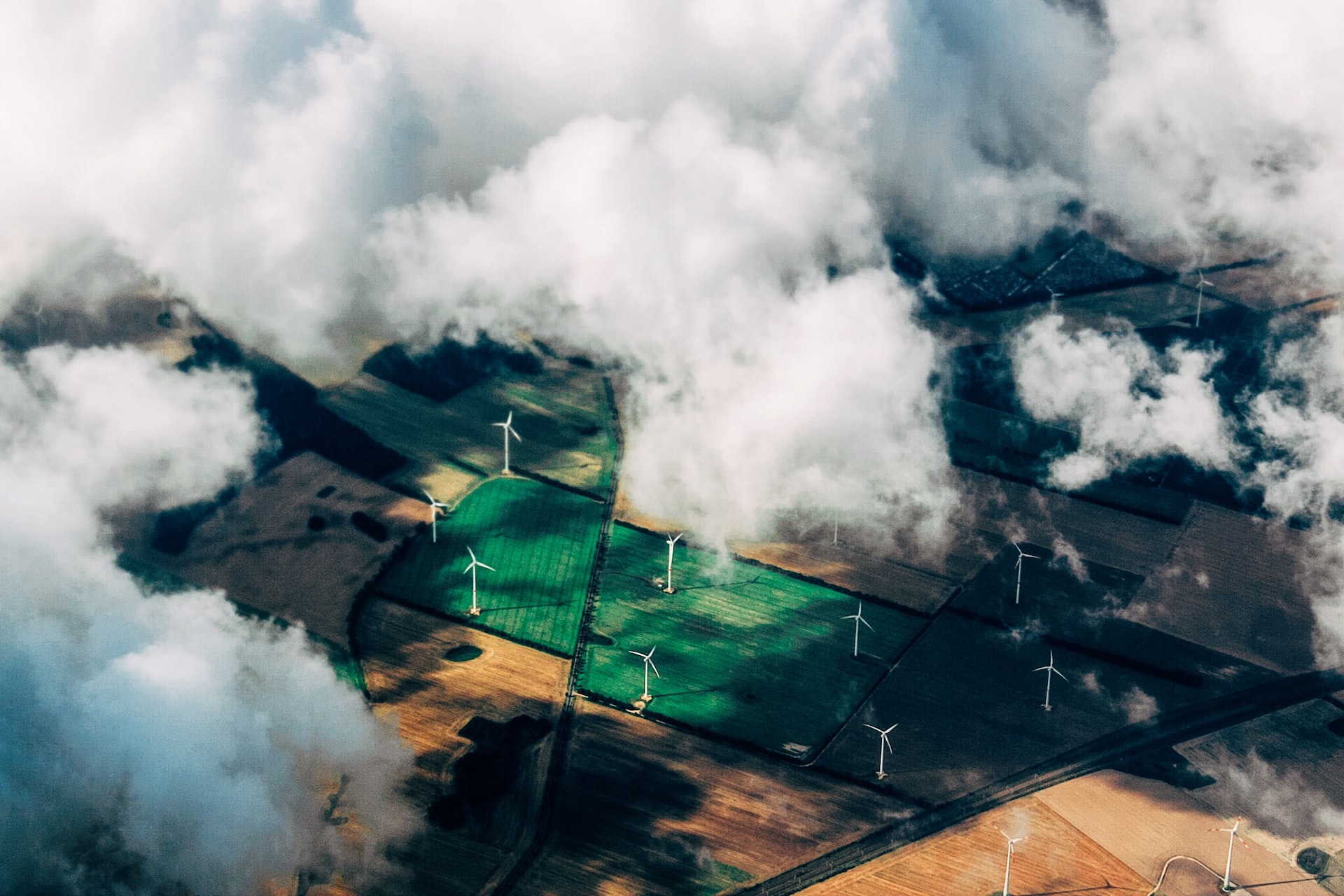A GPS of Things
AI is being used to do everything you didn’t want. It isn’t driving your car, but it did decide you can’t get a mortgage. Your car shames you every time you don’t put on a turn signal, but somehow accidents and congestion are worsening. You wanted Tony Stark’s AI assistant to have your back, but you’re on the phone with a corporate AI bot who isn’t empowered to solve your problem. Is there any hope? AI’s impact is not inevitable. AI could elevate the human spirit… but that does not seem to be the trend.
My son recently described his corporate job as feudalism with extra steps. He wasn’t thinking about politics, but about his ability to get ahead and feel volition over his life. Distracted by politics, COVID, abortion and transgender issues, did I fail to notice the clock reverse several hundred years? If techno-feudalism is now the new form of government perhaps we need a techno-enlightenment. Technology has widened the gap between those with control and those without. We could argue about how or why this happened, but we can’t argue about whether it is happening. The wealth gap is bigger than it has ever been and steadily worsening. You can blame liberals or you can blame conservatives. Blame instead the rise of corpocracy –unbridled technological power without accountability.
The advent of AI large language models has accelerated this trend. Perhaps it is not AI that you need to fear, but the humans hiding behind the curtain. In fact, what we are now calling AI is not artificial intelligence at all, but something masquerading as AI… something I will call “Automated Ideology.” Today’s generative AI is fundamentally distinct from the goals we had at DARPA when we funded early AI. Then the goal was to convert real-world perception into real-world behavior, but today we have cut the cords to the real world.
We once described intelligent decision making as an OODA loop: Observe, Orient, Decide, Act. This is what athletes, warriors and effective robots do. This is not what large language models do. Generative AI predicts what the most likely next word or phrase might be based on a training set. That’s not intelligence, but rather sophisticated regurgitation. Real intelligence is embodied and situated in a specific place and time. In the Encyclopedia of Physical Science and Technology I defined intelligence as the principled coupling of perception and action based on feedback. AI that does not use feedback to observe and act in the real world is not intelligence. I don’t mean this as an insult to the many brilliant human minds working on large language models, but rather as a practical perspective based in biology. In theory, large language models can do just about anything, but in practice LLMs restate what humans have said in the past. This echo-chamber is comforting because people feel affirmed, but the phenomenon allows corporations to control the narrative and present marketing as fact. By elevating the corporate-approved conventional wisdom, it reduces the value of individual human insight and intuition. It turns out that sometimes it is one or two stubborn individuals who swim against the stream and change the way we see the world.
I want to believe in the idea of a techno-enlightenment. I don’t have the answer, but I can put forward an inkling of how it could happen. I feel it in my bones, but to imagine the future, I want to tell you a story from the past. A story about innovation. A story about the importance of positioning. The son of an English coal miner, John Snow, had witnessed the outbreak of cholera in the mine. Observing the tide of death, he became convinced there was a better way to fight disease. He walked 200 miles to the nearest medical school where he was taught that disease comes from bad smells or, specifically, “miasma.”
When a new epidemic of cholera broke out in London, city leaders reiterated the miasma theory –that disease spreads through bad smells that linger in the air. John pointed out that if smells caused disease the night workers who shoveled sewage would be very likely to be sick. “Night soil” certainly smelled, but the workers weren’t getting sick. John hypothesized that contaminated water was the real problem… not miasma. How could he fight centuries of misinformation? The answer was positioning.
John Snow is known as the father of epidemiology, but he didn’t identify the cholera bacteria or even come up with the idea of bacteria. Instead, he pinpointed all the cases. Meticulously. Precisely. On a map he identified the location of each new case of the disease. The position data came to life as a black cloud of ink dots surrounding the Broad Street water pump. This map convinced the authorities, against their will, to dig up the water duct, exposing a crack through which sewage mixed into the drinking water. Still, city leadership filed a formal report negating John Snows unproven assertions. They didn’t want to rebuild the city sewage system or the drinking water system. The conventional wisdom worked just fine for them. The one thing they couldn’t take away from him was the power of positioning. The average person saw his map and believed John’s theory. For those who believed in his positioning data, that positioning was salvation.
What if better positioning could save us now? Those in power can control many aspects of the narrative. John Snow could not defeat their “how,” –the idea that disease was spread by breathing bad humors in the night air. They controlled the “who,” which that the assertion that disease was spread by the poor. The “what” was miasma which you could smell on all those poor. The “why” was that wanton behavior and drinking alcohol was known to spread, if not cause the disease. The one thing he beat them on was positioning. His position data cut through their ideology like a flaming sword.
The truth is what sets us free, but it has become harder to see amid all the noise. The automated ideology we know as social media is making us sick, but we see it as just something in the air. Don’t let them blame miasma. The corporate misuse of social media and large language models is the Broad Street London water pump. They don’t want to dig up the foundation models and show how misinformation is mixing with the news we imbibe. Unfortunately, when misinformation seeps into the cracks in our information flows, a very small amount can spread disease.
We have no shortage of epidemics. Clinical anxiety has risen steeply from 2% in 1980 to where now, according the the Journal of Affective Disorders, anxiety has risen to over 50% of adults in the United States. The rate for youth is even higher. 90% of Americans today believe we face an anxiety epidemic, but very few can tell you why. Maybe its miasma. Seeking irony, I asked Gemini if AI was causing an anxiety epidemic to which it replied that AI was “definitely a contributing factor.” So what is the solution? My hope is that we can decouple AI from ideology and link it to reality. As with John Snow, this means better positioning. Those in power will continue to control the “What”, “How,” “Why” and “Who.” The “Where” is still up for grabs. My belief is that by linking AI to better positioning we can illuminate cause and effect and ferret out the source of a problem. Armed with the right ammunition, AI could “John Snow” those trying to snow us.
Pragmatically, what might this mean for us today? Let’s start with something we all care about… roadway congestion. If you ask AI how to improve congestion and reduce accidents you get two answers that reflect the conventional wisdom. The first “miasma” is that AI-powered self-driving will create safer roads. Unfortunately, NHTSA’s crash data shows that’s not the case. Thus far, AI caused more accidents than it prevented. The second miasma is that reducing speed saves lives. AI glibly repeats this assertion and it’s hard in some sense to argue. We all know that speed kills just as they knew that bad smells bring disease. To test the ideology, the State of Michigan lowered speed limits and discovered that humans are complicated. Lowering speed limits increases the discrepancy between rule followers and rule breakers, producing more accidents and more congestion. Cutting through the ideology required real-world data… with the accuracy to pinpoint the problems and ferret out the cause.
A revolution in accurate position, navigation and timing (PNT) is the key to a better world. I see a future where swarm-based, peer to peer positioning transforms not only AI, but makes everything safer, more efficient and more just. I realize that this sounds like a massive overstatement. Perhaps no one (besides me) wakes up in the morning and feels a burning need for position accuracy. I want that to change.
When we mapped out the plan for a swarm of micro-mobility vehicles we knew the idea had the potential to transform urban transportation. We understood that positioning would be critical because we needed a way to know when scooters were left in the middle of the road. We also wanted to identify scooters that needed to be charged or maintained and, for safety, to constrain speed while on a sidewalk. We were right about the need for micro-mobility and scooters scaled like crazy, but too few understood the need for micro-positioning. Relying on GPS meant an epidemic of accidents and a lack of profit.
We saw this again when the Department of Transportation connected vehicle program chose to depend on GPS. Want to know why we can’t solve the congestion problem? A safe and efficient roadway is a PNT challenge… not an intelligence issue. Neither you nor any AI can individually think your way through a traffic jam, because the solution is all about flow. When I contrast a school of mackerel with humans driving on the interstate, it seems individual intelligence may be a liability rather than a solution. We need to become swarm and this requires a shift from global positioning to a peer to peer model. We need the average person to see those ink dots form. I don’t want the government to track you, but I do want you to understand the context around you.
I don’t want to know how many speeding tickets you have. I want to measure the impact of your car on the roadway. Imagine a system based not on static rules, but rather motion data. On a crowded road I cut off my neighbors right and left. People slam on brakes and traffic backs up for a mile in my wake. If I did it all while going under the speed limit the rules have been followed but my neighbors are furious. Conversely, if I drive over the speed limit without a soul on the road, it is a victimless crime. I want an AI smart enough to observe the real world and understand this difference in context. Context is everything. Today, insurance companies stick to the idea that the number of speeding tickets can be used to predict accidents, but they know it isn’t true. Insurance actuaries would love to move beyond ideology, because it doesn’t pencil out, but without accurate positioning they do not have the means. With accurate PNT you can trace emergent effects down to centimeters and nanoseconds and that’s starting to look a lot like ground truth – the most critical ingredient for the techno-enlightenment we seek.
If you don’t want the truth, keep telling us to watch out for Miasma. Otherwise, seek ground truth. It isn’t GPS, but a new “GPS of things.” Enhanced GPS is the ultimate AI infrastructure and it’s also a defense against potential conflicts looming. We can debate how to implement it, but not its importance. Multiple countries have demonstrated the ability to knock out GPS. The problem isn’t getting to the donut shop. Want to understand the power of positioning? Watch Leave the World Behind to understand. Obama produced it to illustrate the gravity of this threat. Every financial system depends on GPS. In addition to an outright attack on satellites, we must prepare our roadways, shipping lanes and ports for jamming and spoofing. Whether you want to resist foreign attack, respond to an epidemic, or create a more efficient roadway, the key is a revolution in “where.” Let’s make AI work for us. Let it chew on ground truth and transform AI from a fountain of ideology to an engine of truth.



